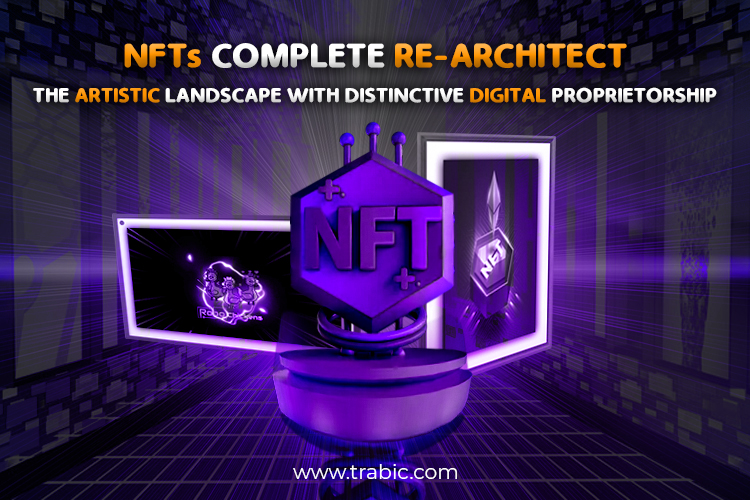What Are NFTs (Non-Fungible Tokens), And How Do They Work?
NFTs, or non-fungible tokens, are digital assets representing a unique item or piece of content, like artwork, music, or video, on a blockchain network. Unlike fungible tokens like cryptocurrencies, which are exchangeable and keep an identical value, each NFT is exceptional and cannot be reproduced or exchanged for another.
NFTs use blockchain technology to create a permanent and verifiable record of ownership and transfer for a specific digital asset. The NFT is created by a process called “minting,” in which the creator of the asset creates a unique token on a blockchain network, such as Ethereum, representing the asset’s ownership. This produces an enduring and tamper-proof record of the ownership and transfer of the asset on the blockchain network.
Once an NFT is created, it can be bought, sold, and traded like any tangible asset. The value of an NFT is determined by market demand and the perceived value of the underlying digital asset. This means that an NFT can fluctuate immensely over time, and there is no guarantee that it will retain its value or appreciation.
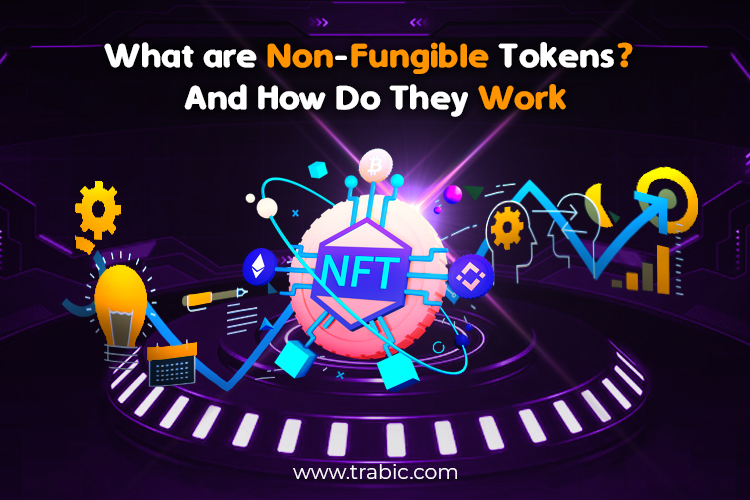
NFTs have gained popularity for artists, musicians, and other content creators to monetize their digital creations and establish ownership and control over their intellectual property. They also provide a way for collectors and fans to own unique pieces of digital content and support their favorite creators.
The term NFT has been making rounds in art and entertainment. From selling a $69 million digital artwork to creating virtual real estate, NFTs (Non-Fungible Tokens) have revolutionized how people own and trade unique digital assets. But what exactly are NFTs, and how do they work? At the most basic level, an NFT is a digital asset representing ownership of a unique item, such as a piece of art, music, or even a tweet.
Unlike traditional currencies or cryptocurrencies, NFTs are non-fungible, meaning they cannot be exchanged for other assets on a one-to-one basis. Each NFT is unique and has its distinct value. To understand how NFTs work, it’s essential to grasp the underlying technology that powers them: blockchain. Blockchain is a decentralized, financially distributed ledger that registers transactions and provides a secure way to store and share information. NFTs are created using smart contracts, which are self-executing computer programs that automatically enforce the terms of a digital contract.
When an artist or creator wants to create an NFT, they mint a digital asset on the blockchain, attaching metadata such as the title of the work, the creator’s name, and a unique identifier to the asset. This metadata acts as proof of ownership, and the NFT can then be sold or traded like any other asset. Since the NFT is unique, the creator can set their price for it, and buyers can bid on it like they would for a traditional auction.
One of the significant advantages of NFTs is that they provide a new revenue stream for artists and creators. With traditional artwork or music, the creator typically sells the original, which ends the transaction. However, with NFTs, the creator can retain ownership of the original and sell multiple copies or editions of the work, allowing them to profit from their creations in perpetuity.
Another advantage of NFTs is that they provide proof of ownership and authenticity. With traditional artwork, it can be challenging to verify the authenticity of a piece, and forgeries can be widespread. However, since NFTs are minted on the blockchain, they can be traced back to the original creator, providing buyers with assurance that they are purchasing a genuine item.
In conclusion, NFTs have opened up a new world of possibilities for artists and creators, providing them a new way to monetize their work and establish their ownership and authenticity. While the technology is still relatively new, NFTs have already demonstrated their potential to disrupt traditional art and entertainment markets. Whether you’re a collector, artist, or simply interested in blockchain, NFTs are undoubtedly worth exploring.
What Do You Own After An NFT Purchase?
With the rise of NFTs or non-fungible tokens, the digital realm’s ownership concept has been turned on its head. NFTs are unique, unique digital assets stored on a blockchain that can be traded(bought or sold). But what do you own when you purchase an NFT? In this essay, we’ll explore the various components of an NFT purchase and what they mean for ownership in the digital age.
Firstly, it’s important to understand that an NFT purchase does not confer ownership of the underlying asset. For example, if you purchase an NFT of a famous painting, you don’t own the painting – you own a digital representation. The painting belongs to the original owner; you cannot sell or transfer the physical artwork.
However, what you own when you purchase an NFT is the unique cryptographic code representing the digital asset. This code is stored on a blockchain, a decentralized digital ledger that records all transactions related to the NFT. The blockchain ensures that the NFT is unique, verifiable, and easily tracked.
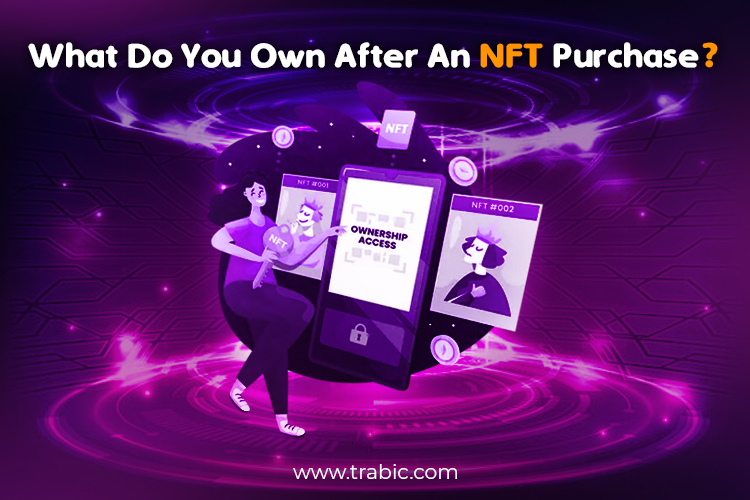
In addition to the code, an NFT purchase may include certain rights or privileges related to the digital asset. For example, if you purchase an NFT of a music album, you may be granted exclusive access to certain tracks or remixes. Similarly, if you purchase an NFT of a game item, you may be given special in-game perks or bonuses.
Moreover, an NFT purchase also comes with the bragging rights of owning a unique, rare digital asset. Just as people collect physical items like stamps or sports cards, NFT collectors can showcase their unique digital assets as a sign of status or wealth.
Overall, while an NFT purchase does not confer ownership of the underlying asset, it does provide a unique digital representation of it, along with certain rights and privileges. Additionally, owning an NFT provides a unique way of collecting and showcasing rare and unique digital assets in the digital age.
When you buy an NFT (non-fungible token), you own a unique and verifiable digital asset that the NFT represents on a blockchain network. The NFT acts as a digital certificate of ownership for that asset, a piece of artwork, music, a video, or any other digital content. The ownership of an NFT does not necessarily include the copyright or intellectual property rights to the underlying digital asset. These rights may remain with the creator or original rights holder of the content unless explicitly transferred to the NFT owner as a part of the sale agreement.
What the NFT owner does have is a verifiable and provable ownership of that specific digital asset, which can be transferred, traded, or sold just like any other tangible asset. The NFT also provides a permanent and immutable record of the ownership and transfer of the asset on the blockchain network, which makes it difficult to falsify or replicate.
It is worth noting that the ownership and value of an NFT are primarily determined by market demand and perceived value rather than any inherent value or utility of the underlying digital asset. This means that an NFT can fluctuate significantly over time, and there is no guarantee that it will retain its value or appreciation.
What is Distinctive Digital Proprietorship?
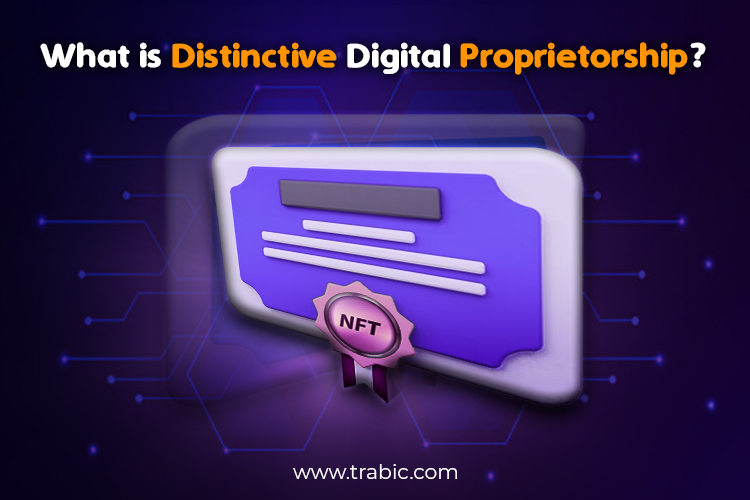
Distinctive digital proprietorship refers to the ownership and control that an individual or entity has over a unique digital asset or creation. In the context of NFTs (non-fungible tokens), the digital proprietorship is created when an artist creates a unique digital token representing ownership of their artwork, music, or other digital creations. This token is then stored on a blockchain, which acts as a decentralized digital ledger that records transactions and ownership information in a transparent and immutable way.
Using NFTs, artists can claim distinctive digital proprietorship over their creations, allowing them to sell their digital art as unique, one-of-a-kind pieces, with ownership and provenance recorded on the blockchain. This provides a new level of authenticity and rarity in digital art, where copies and reproductions are easy to create and distribute. NFTs also allow for greater control over how digital art is sold and monetized, as artists can set terms and conditions for how their creations are used and shared.
Distinctive digital proprietorship is a new concept made possible by the unique characteristics of NFTs and blockchain technology. It provides a way for creators to protect their intellectual property and digital assets ownership over their digital creations in a way that was impossible before. Distinctive digital proprietorship refers to the unique ownership of a digital asset enabled by NFTs. NFTs are digital tokens (digital assets) that use blockchain technology to certify ownership of digital assets such as images, videos, and audio files. These tokens give the owner unique, verifiable, and immutable proof of ownership over a digital asset.
Unlike traditional digital assets that can be easily duplicated and shared, NFTs allow creators to monetize their digital works while retaining authenticity and uniqueness.
With NFTs, digital art is not just a collection of pixels on a screen but a valuable and distinct work of art. NFTs enable creators to monetize their work and earn royalties on each subsequent art sale. This is made possible by the smart contract technology used in NFTs, which allows creators to program the terms of the sale, including the percentage of royalties they receive each time the work is sold.
The concept of distinctive digital proprietorship has implications beyond just digital art. It can be applied to digital assets such as music, videos, and virtual real estate. The ability to certify ownership of digital assets can revolutionize how we think about digital ownership and intellectual property. It may lead to the development of new digital asset markets and new ways for creators to earn a living from their work.
But with new technology comes new challenges. One issue is the potential for fraud, as it can be difficult to verify the authenticity of a digital asset. Another issue is the environmental impact of NFTs, as the energy required for blockchain transactions is significant.
NFTs and distinctive digital proprietors have opened up a new era of digital asset ownership. They provide a means for creators to monetize their work while retaining the authenticity and uniqueness of their creations. However, this new technology also poses new challenges that must be addressed. As we move forward, it will be important to strike a balance between innovation and sustainability, ensuring that the benefits of NFTs are realized without compromising our planet or the integrity of digital ownership.
What Is The Significance Of Distinctive Digital Proprietorship Regarding NFTs?
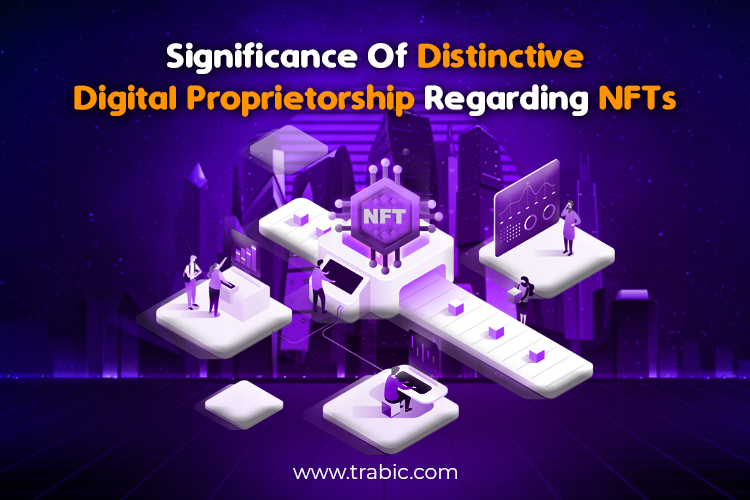
Distinctive digital proprietorship regarding NFTs is essential because it allows creators and owners of digital content to establish ownership and control over their intellectual property. Before the emergence of NFTs, proving ownership and preventing unauthorized copying and distribution of digital content was difficult.
By using NFTs to represent unique and verifiable digital assets, creators can establish a permanent and tamper-proof record of ownership and transfer on a blockchain network. This provides authenticity and provenance that was previously impossible with digital content. It also allows creators to monetize their digital creations by selling or licensing their NFTs to collectors and fans.
Distinctive digital proprietorship also has broader implications for the future of digital content and intellectual property rights. As more and more content is created and distributed digitally, establishing clear ownership and control over it becomes increasingly important. NFTs provide a promising new approach to solving these issues and could play an essential role in modeling the digital economy’s future.
How Have NFTs Re-Artifacts The Artistic Landscape?
The art world has undergone a major transformation with the introduction of Non-Fungible Tokens (NFTs). These digital assets, which prove ownership of a particular piece of art, have fundamentally altered how artists create and distribute their work. In this essay, we will explore how NFTs have re-artifacts the artistic landscape and the implications this has for the art world.
Firstly, NFTs have allowed artists to monetize their digital creations directly. In the past, artists who created digital art often needed help to make a living from their work as it was easily replicated and shared online without their consent. However, with the introduction of NFTs, artists can now sell their digital works as unique and valuable art pieces. This has led to a new era of digital art where artists can earn a living from their work and have more control over the distribution of their creations.
Moreover, NFTs have also provided artists with a new canvas to explore their creativity. With the ability to create digital works sold as NFTs, artists can experiment with new forms and mediums of art that were not possible before. For example, artists can now create interactive and immersive digital art pieces that can be experienced by audiences all over the world. This has led to a new era of artistic innovation and experimentation.
NFTs (non-fungible tokens) have re-architected the artistic landscape by providing a new way for artists to claim digital proprietorship over their work. With NFTs, artists can create unique digital tokens representing ownership of their artwork, music, or other digital creations. These tokens are stored on a blockchain, a decentralized digital ledger that keeps track of transactions and ownership information in a transparent and immutable way.
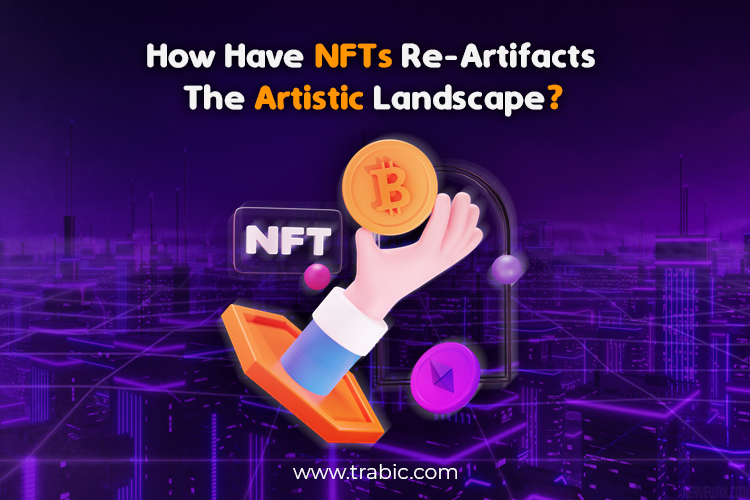
Using NFTs, artists can sell their digital creations as unique, one-of-a-kind pieces of art, with ownership and provenance recorded on the blockchain. This allows for a new level of authenticity and rarity in the digital art world, where copies and reproductions are easy to create and distribute. NFTs also allow for greater control over how digital art is sold and monetized, as artists can set terms and conditions for how their creations are used and shared.
In addition to providing a new revenue stream for artists, NFTs are changing how art is consumed and valued. Because each NFT is unique and verified on the blockchain, it can have a higher perceived value than a digital file that can be easily copied and shared. NFTs also allow new ways of interacting with art, such as through gamification or interactive experiences built into the NFT.
Overall, NFTs are disrupting the traditional art market and redefining the value and ownership of digital art. While there are still questions about the environmental impact and accessibility of NFTs, there is no doubt that they are transforming the way that artists and audiences view and engage with digital creations. NFTs have opened up new opportunities for collectors to invest in unique art pieces with verifiable ownership and provenance and for creators to showcase their work.
NFTs (non-fungible tokens) are re-architecting the artistic landscape by providing a new way for artists to claim digital proprietorship over their work. With NFTs, artists can create unique digital tokens representing ownership of their artwork, music, or other digital creations. These tokens are stored on a blockchain, a decentralized digital ledger that keeps track of transactions and ownership information in a transparent and immutable way.
Using NFTs, artists can sell their digital creations as unique, one-of-a-kind pieces of art, with ownership and provenance recorded on the blockchain. This allows for a new level of authenticity and rarity in the digital art world, where copies and reproductions are easy to create and distribute.
NFTs also allow for greater control over how digital art is sold and monetized, as artists can set terms and conditions for how their creations are used and shared. In addition to providing a new revenue stream for artists, NFTs are changing how art is consumed and valued. Because each NFT is unique and verified on the blockchain, it can have a higher perceived value than a digital file that can be easily copied and shared.
NFTs also allow new ways of interacting with art, such as through gamification or interactive experiences built into the NFT. NFTs are disrupting the traditional art market and redefining the value and ownership of digital art. While there are still questions about the environmental impact and accessibility of NFTs, there is no doubt that they are transforming the way that artists and audiences view and engage with digital creations.
